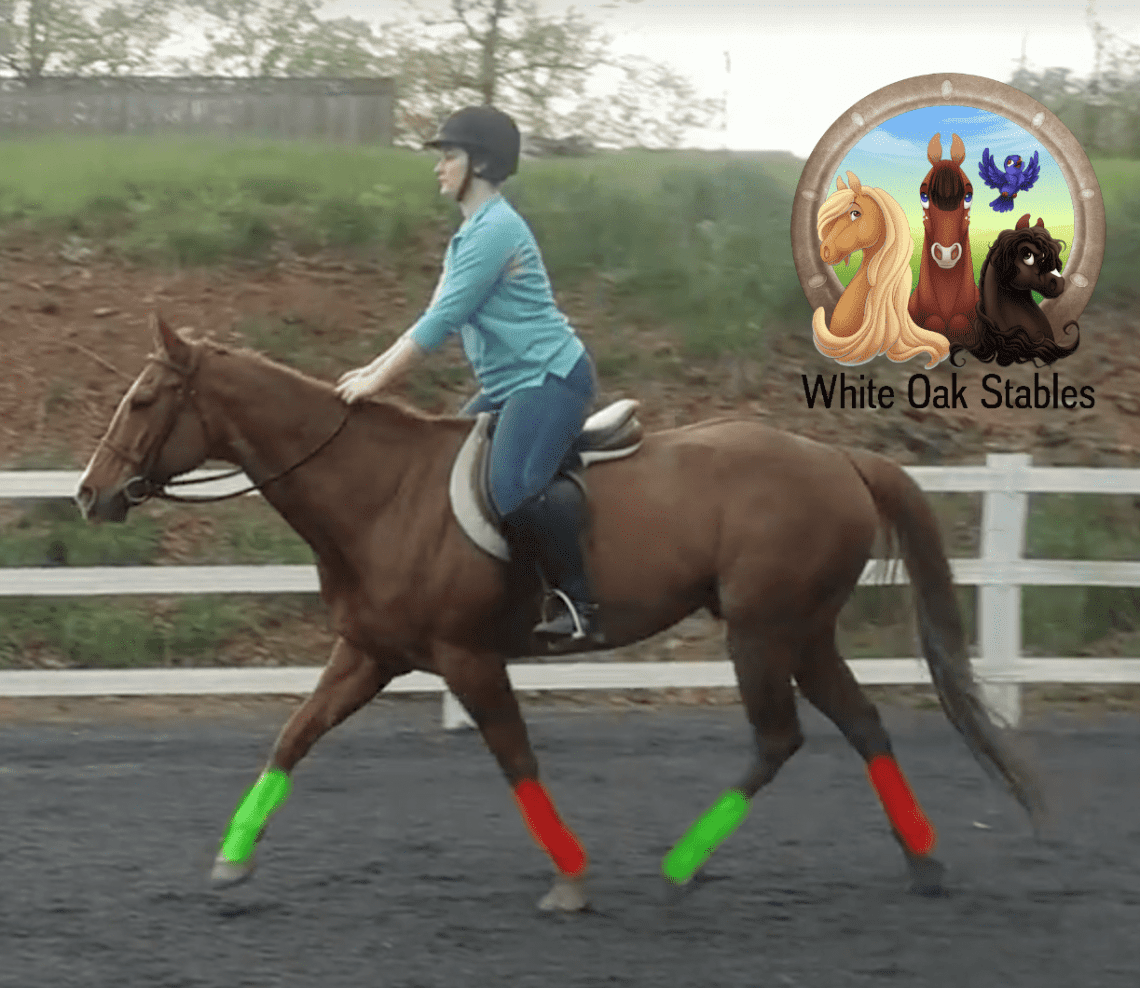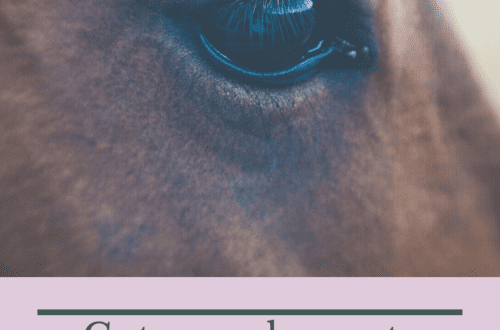
Tips for Instructors: Teaching the Rider to Lighten to the Right Diagonal
Tips for Instructors: Teaching the Rider to Lighten to the Right Diagonal
How do you know if a rider is ready to learn how to lighten under the right diagonal?
Before I start teaching a rider how to tell if he is lightening on the right diagonal or not, I have to make sure he has some basic skills.
First of all, the rider must be able to lift the horse into a trot and immediately begin to ease in the required rhythm.
The rider must understand what we mean when we say “inside” and “outside”. When we start talking about diagonals, we’re going to ask the rider to watch the horse’s outside front leg. It is important that he knows where this leg is. It sounds very simple, but it can also be confusing, especially for children. If the rider does not have a clear understanding of “in and out”, I can tie colorful ribbons around his hands, and then dictate changes of direction to him. Each time the rider changes direction, he must name the color of the ribbon that becomes the outside. Children like this approach very much, and it seems to me that in this way they learn to understand the inner and the outer more quickly and easily.
Finally, you must make sure that the rider can make a smooth change of direction at the trot (he must be able to change direction without letting the horse slow down). When we check the diagonals, the rider should change direction and support the horse in a good trot without losing the rhythm of relief. If a horse has gone into a walk and the student has brought it into a trot by accidentally easing into the correct diagonal, we will not be able to teach him how to change the diagonal if he is not riding with the correct leg.
What does it mean to lighten under the correct diagonal?
When we ease into the correct diagonal, that means we get up as the horse moves forward with its front outside leg. In other words, we get up during the horse’s stride when the horse’s back comes up and makes us “bounce”.
The inside hind leg is the diagonal pair of the outside front leg. The inside hind leg is the leg that creates all the energy in the trot. When the horse’s inside leg hits the ground, the horse is balanced and that’s when we want to be down in the saddle. This will help her balance and, in turn, help us.
In other words, when we ease into the correct diagonal, we use the momentum of the horse’s trot to help lift ourselves out of the saddle, rather than trying to sit down as the horse’s back rises. Once you know how to do this, easing into the correct diagonal will make the trot more comfortable for both horse and rider. Facilitating under the correct diagonal is the main basic skill that will not go unnoticed by the judges in the tournament.
How to check the diagonal?
Once we see that the rider can relieve in good rhythm by changing direction at the trot and can identify “inside and out”, we can work on the diagonals.
At the walk (even though the horse’s body moves differently from the trot) I want my students to identify the outside front shoulder/leg of the horse. It is easier for us to see the rise of the shoulder than the leg itself when the horse takes a step.
I want the rider to change direction as he walks, telling me every time he sees the horse raise his outside shoulder. I need to make sure the rider does this in a timely manner and remembers to look over the other shoulder when changing direction. I ask him not to worry, because when he trots, the movement of the horse’s shoulder will become more noticeable. As with everything else, I’m slowly working on the diagonals!
Then I ask the student to bring the horse into a trot and begin to relieve himself in the way he usually does. Then I tell him if he eases into the correct diagonal. If he relieves correctly, I tell the student that he got lucky on the first try! I then ask him to watch the rise of the horse’s outside shoulder so he can get used to how it should look. All the while I’m reminding the student that looking down doesn’t mean he has to lean forward. We tend to lean where our eyes are looking – keep this in mind if your student starts to lean forward when checking the diagonal.
If the rider eases into the correct diagonal on the first try, after looking at the outside shoulder (to see what it should look like), he can also look at the inside shoulder to see what the “wrong” situation looks like. For some riders, this helps a lot, but for some it can be very embarrassing. As a trainer, you will need to determine which methods to use with each individual rider.
What if the rider eases under the wrong diagonal, how to change it to the correct one?
First you need to determine if the diagonal is correct or not. Don’t try to teach the rider to change diagonals until he can tell if he is lightening correctly or not. I have found that giving a lot of information at once can only confuse the student even more.
If your student is on the wrong diagonal, in order to change it, he will need to sit in the saddle for two beats of the trot, and then start to ease up again. In other words, instead of continuing to move up, down, up, down (the normal rhythm of relief), he will need to “do” up, down, down, up, and then ease again. It will take time and practice, but as with all riding skills, one day it will become a habit. Experienced riders unconsciously check diagonals without even looking down.
I have discovered one feature. If you are teaching riders in a group, it will be helpful for them to take turns looking at each other and saying if the other riders are lightening correctly. Watching someone lighten up as well as change the diagonal can really help the student understand the idea. Especially if the student is visual (it is easier to learn if he sees a “picture”).
You can turn it into a game where you pick a student and send them to trot and the other student has to determine if the first one is lightened on the right leg or not. Then you choose another student to see if the diagonal is right or wrong. This way, all your riders are learning, even if it’s not their turn to trot.
Once the students are good at navigating the diagonals, you can play another game: now the rider on the horse is not allowed to look down and check the diagonal, he will have to feel if he is riding correctly or not.
This will be a great opportunity to remind students that relief is movement that allows you to stay in rhythm with your horse. If something interferes with this, you should double check your diagonal. For example, if the horse got scared and violated the relief order. Sometimes the horse can change its rhythm – it speeds up or slows down sharply. If the rhythm changes or something happens, you need to double check your diagonal.
How long does it take for a rider to learn the skill of riding under the correct diagonal?
As with learning all other riding skills, the speed of learning depends on the rider, each person will develop in his own way. Learning new skills, step by step, based on logic, helps riders quickly learn new skills, including facilitating the correct diagonals. You need to master one step before moving on to the next.
Often riders quickly begin to catch on to whether they are lightening under the correct diagonal or not. They just don’t always remember that they need to check it! In other words, the production habits to check the diagonal in the case of some students, it takes longer than learning the skill itself.
Technique Improvement
As soon as my riders start to lighten well, get used to checking and changing diagonals, I introduce them to a wonderful exercise, which helps to improve technique, as well as improve control over the entire body.
As I mentioned earlier, the typical way to change diagonals is to sit through the trot for two beats and then return to normal rhythm. In other words, up, down, down, up.
Now ask the student to practice changing the diagonals in the opposite way. In other words, if the rider realizes that he made a mistake, ask him to change the diagonal by standing for two measures instead of sitting. Thus the diagonal will change as long as the rider remains above the saddle for two beats of the trot (up, up, down, not down, down, up). Likewise, he will skip two measures to change the diagonal.
This exercise will help develop strength in the legs and core and improve balance. Subsequently, it will facilitate the work on improving the two-point landing, which, in turn, will be required to overcome obstacles.
If you tell the kids that this particular exercise is not only for working on changing diagonals, but is also a building block for jumping, they will be wonderfully motivated!
Stumbling block
The process of learning to ride a horse is much more complicated than many people think when they first come to class. We just have to remember that in order to become confident riders, we need to master one step before moving on to the next. Even if at this point it looks like a struggle, you must first work out one action, and then move on to another.
When it comes to riding, all novice riders need to understand that there is now no limit to their knowledge and excellence. This learning process is lifelong, and those who embrace this principle will eventually look back on their first steps (such as learning to lighten up) and be proud of how far they have come on their journey.
Allison Hartley (source); translation Valeria Smirnova.
 Iunia Murzik 5th of December 2018
Iunia Murzik 5th of December 2018Thanks a lot for this article. It was only after reading it that I finally realized what it meant to be relieved correctly. I will study. Answer





